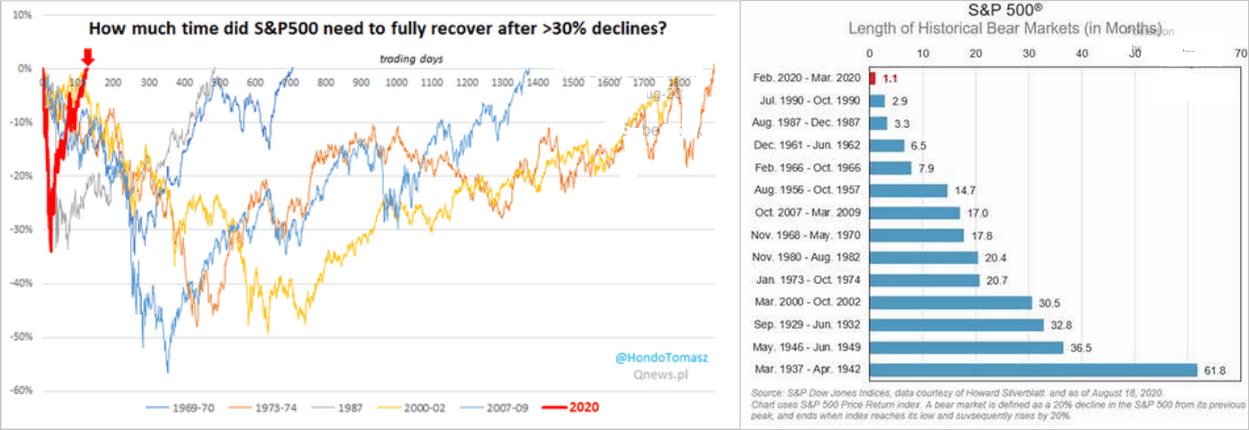A 50-Percent Decline Will Only Be A Correction
A 50-percent decline will only be a correction and not a bear market.
I know. Right now, you are thinking, how could anyone suggest a 50-percent decline in the market is NOT a bear market. Logically you are correct. However, technically, we need an essential distinction between a “correction” and a “bear market.”
In March 2020, the stock market declined a whopping 35% in a single month. It was a rapid and swift decline and, by all media accounts, was an “official” bear market. But, of course, with the massive interventions of the Federal Reserve, the reversal of that decline was equally swift. As YahooFinance pointed out at the time.
“The S&P 500 set a new record high this week for the first time since Feb. 19, surging an eye-popping 51% from its March 23 closing low of 2,237 to a closing high of 3,389 on Tuesday. This represents the shortest bear market and third fastest bear-market recovery ever.” – Sam Ro

However, as I discussed at the time, March 2020, much like the “1987 crash,” was in actuality only a correction. To understand why March was not a “bear market,” we must define the difference between an actual “bear market” and a “correction.”

Defining A Correction & A Bear Market
Start with Sentiment Trader’s insightful note following the 2020 recovery to new highs.
“This ended its shortest bear market in history. Using the completely arbitrary definition of a 20% decline from a multi-year high, it has taken the index only 110 days to cycle to a fresh high. That’s several months faster than the other fastest recoveries in 1967 and 1982.”
Note their statement that the media’s definition of a “bear market” consisting of a 20% decline is “completely arbitrary.” Given that price is nothing more than a reflection of the psychology of market participants, using the 20% definition may not be accurate any longer.
…click on the above link to read the rest of the article…